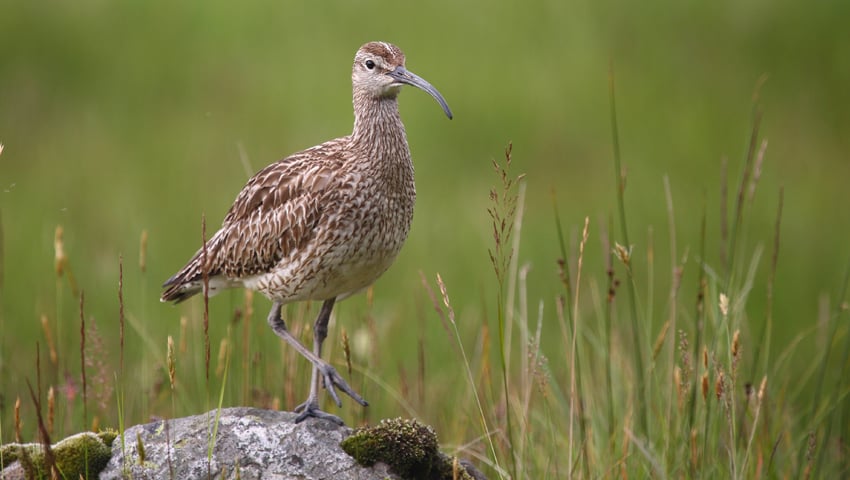An upward trend in the number of Curlew chicks fledging across five sites in the UK has been celebrated as part of a dedicated four year project.
Despite being in a perilous position as a breeding bird in the UK the figures show hope for the species’ recovery.
RSPB says that this is down to the work of dedicated conservationists, volunteers and local farmers, many of whom are working in partnership through the Curlew LIFE project.
As Europe’s largest wading bird, the Curlew is famous for its long legs, down-curved bill and haunting bubbling call which once called out across the UK. A now red-listed bird, Curlew have been in steep decline, with nearly half (48%) of our breeding Curlews lost since the mid 1990s.
Hosting around a quarter of the world’s breeding Curlews across a range of habitats, the UK is of vital significance for the bird. In response to its plight, dedicated conservation efforts have been taking place through the Curlew LIFE project to aid their recovery across upland and lowland farms.
Funded by the European Commission LIFE Programme, Curlew LIFE focussed these efforts on five key areas for the species: Hadrian’s Wall and RSPB Geltsdale, Northern England, the Antrim Plateau and Lough Erne lowlands in Northern Ireland, farmland in Conwy, North Wales, and RSPB Insh Marshes in Scotland.
With the breeding results from these areas gathered, the figures show that the number of Curlew chicks that hatched and successfully fledged has risen since the project began in 2020.
This forms a strong foundation for the recovery of Curlew at the five project sites, including at the Antrim Plateau, where this season saw a remarkable increase in the breeding population, jumping from 37 pairs last year to 52 pairs this year.
Reflecting on the results, Suzannah Rockett, Curlew LIFE project manager, said, “Starting to shift the dial for Curlew recovery through the Curlew LIFE project has been no mean feat, and the work certainly does not stop here. The commitment of hundreds of farmers, alongside staff and volunteers, has been crucial to delivering this success so far and will need to continue if we are to enjoy the mystifying call of the Curlew for many years to come.”
Working alongside farmers to improve thousands of hectares for Curlew, the project has deployed a mix of conservation solutions, with hands-on efforts such as nest protection fences, habitat restoration and predator management creating the conditions needed to give Curlew the best chance of success. For example, wet habitat features such as good quality peatland have proved vital for Curlew as they favour boggy, rushy areas to breed, while vegetation management through cutting and grazing has allowed for young chicks to remain camouflaged and feed amongst the right mix of taller vegetation. These habitat interventions can also benefit a host of other threatened species such as Snipe, Redshank and Lapwing.
Rockett concluded, “In laying the foundation for their recovery, we have learnt that no one size fits all; the habitat management and interventions Curlew need can vary from place to place. To support the recovery of Curlew and other declining wildlife across their land, farmers need targeted advice and financial support through agri-environment schemes.”
